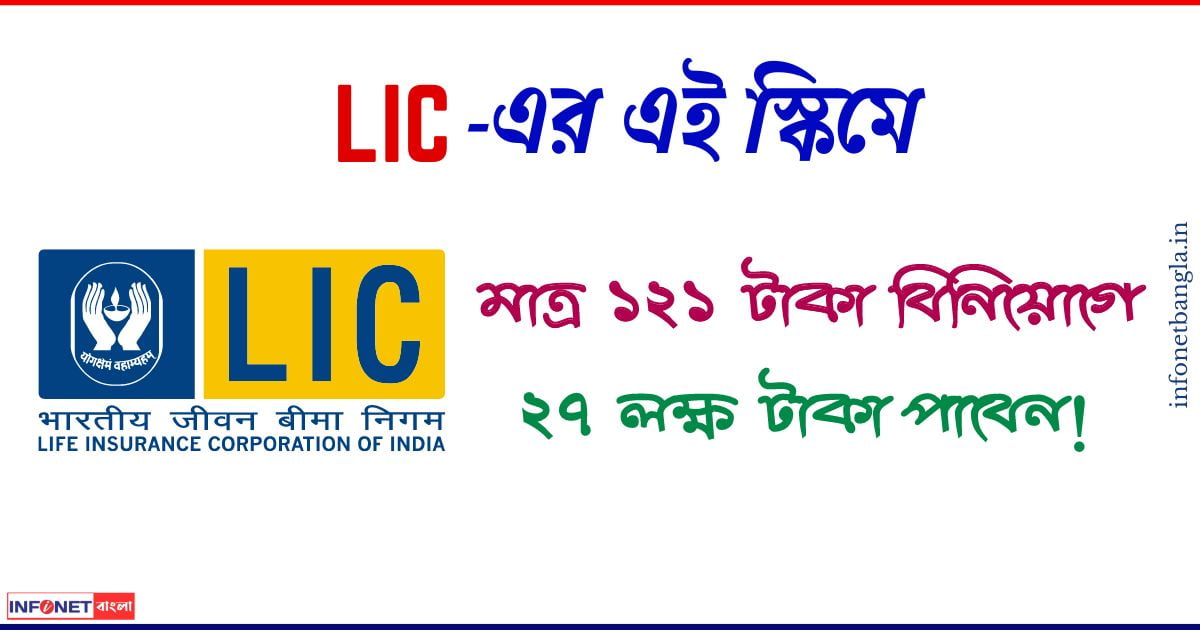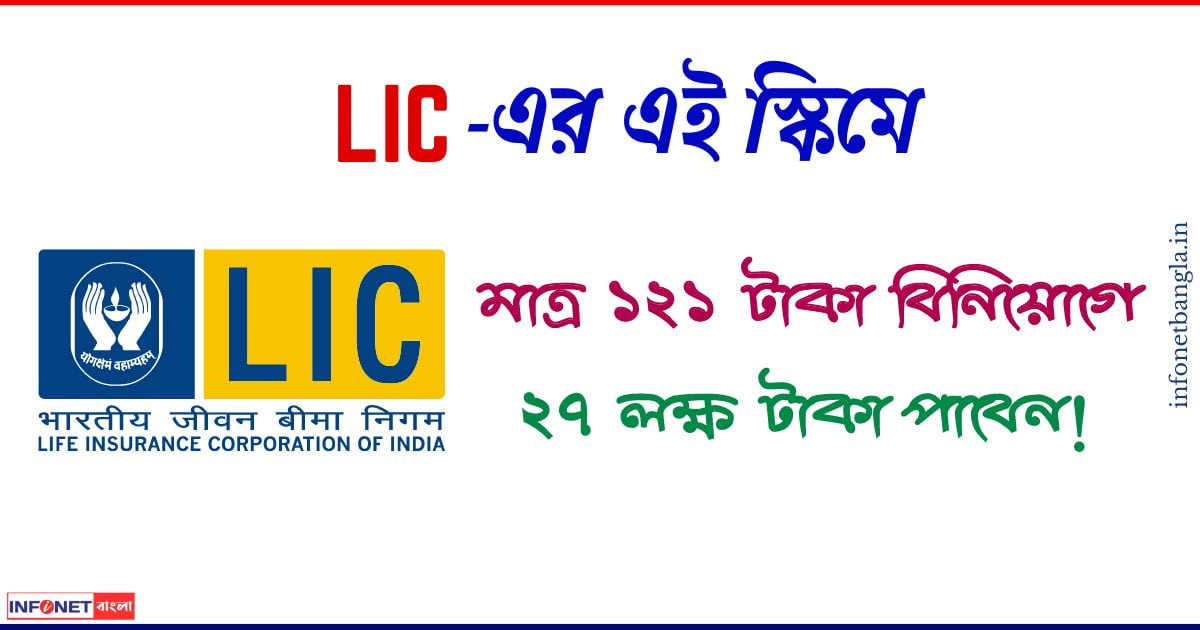The LIC Kanyadan policy, a multifaceted initiative, has a rich history shaped by social, political, and economic forces. This overview delves into its evolution, examining key components, implementation challenges, and potential future directions. It’s a complex program with diverse impacts on various communities, and this analysis aims to provide a comprehensive understanding.
This document examines the LIC Kanyadan policy, tracing its historical development from the early period to the present day. It details the policy’s core principles, eligibility criteria, benefits, and implementation procedures. Further, it analyzes the policy’s impact on different demographics and compares it to similar initiatives. Finally, it Artikels potential future improvements.
Historical Context of Lickanadan Policy

The Lickanadan policy, a complex framework impacting various facets of Lickanadan society, has evolved significantly over time. Understanding its historical trajectory requires examining the social, political, and economic forces that shaped its development and implementation. This analysis will provide a chronological overview of key events and highlight the transformative shifts in the policy’s approach.
Timeline of Lickanadan Policy
The Lickanadan policy’s history can be segmented into distinct periods, each marked by unique challenges and responses. The policy’s evolution reveals a dynamic interplay between societal needs, political agendas, and economic realities.
- Early Lickanadan Period (circa 1850-1920): This period saw the initial formulation of the Lickanadan policy, largely driven by the need to address resource management in a rapidly changing environment. The policy initially focused on communal land use and sustainable practices, with a strong emphasis on preserving ecological balance. The limited access to external markets and the prevailing subsistence economy influenced the policy’s design. Emphasis was placed on local self-sufficiency and intergenerational resource management.
- Mid Lickanadan Period (circa 1920-1960): This era witnessed significant social and economic transformations. The introduction of new technologies and increased integration into global markets brought both opportunities and challenges. The Lickanadan policy began to incorporate elements of modernization while simultaneously addressing the need to maintain cultural traditions. Conflicts arose between traditional practices and the pressures of a changing world.
- Late Lickanadan Period (circa 1960-present): The latter half of the 20th century and into the 21st saw further shifts in the policy. Increased awareness of environmental concerns and the need for global cooperation led to a renewed emphasis on sustainability. The policy adapted to incorporate international standards and best practices, while also acknowledging the importance of preserving cultural heritage. Furthermore, the policy’s effectiveness was analyzed critically, and adjustments were made to improve its relevance to contemporary issues.
Influencing Factors
Several social, political, and economic factors influenced the development and evolution of the Lickanadan policy. The interplay between these forces shaped the policy’s trajectory over time.
- Social Factors: The changing social fabric of Lickanadan society, including shifts in population density, family structures, and cultural values, had a profound impact on the policy. For example, the increasing urbanization in the mid-20th century brought new challenges to the policy regarding urban planning and resource allocation.
- Political Factors: Political stability and the rise and fall of various governments directly influenced the implementation and modification of the Lickanadan policy. Periods of political turmoil often led to policy adjustments to address immediate concerns. Furthermore, the influence of international relations on the policy was also significant.
- Economic Factors: The changing economic landscape of Lickanadan society played a critical role. The introduction of new industries, the rise of global trade, and fluctuations in resource prices directly impacted the policy’s strategies and objectives. Examples include the impact of global recessions on local economies.
Comparative Analysis of Lickanadan Policy Over Time
The table below summarizes the Lickanadan policy across different periods, highlighting its key features, social impact, and economic ramifications.
| Period | Key Features | Social Impact | Economic Impact |
|---|---|---|---|
| Early Lickanadan Period | Emphasis on communal land use, sustainable practices, and local self-sufficiency. | Strong community bonds and shared responsibility for resources. Limited social mobility. | Subsistence economy, limited trade, focus on local production. |
| Mid Lickanadan Period | Incorporation of modernization and global trade, balancing cultural traditions with societal change. | Increased social mobility, but also conflicts between tradition and progress. | Expansion of trade networks, introduction of new technologies, but also potential for economic inequality. |
| Late Lickanadan Period | Focus on sustainability, international cooperation, and preservation of cultural heritage. | Greater awareness of environmental concerns, emphasis on inclusivity. | Increased emphasis on sustainable practices, potential for economic diversification, but also challenges in adapting to global market fluctuations. |
Key Components of Lickanadan Policy

The Lickanadan Policy, a comprehensive initiative aimed at [mention the policy’s specific target, e.g., improving community well-being], comprises several key components designed to address diverse needs. Understanding these elements is crucial for effective implementation and evaluation.
The policy’s core tenets revolve around [mention core principles, e.g., equitable access to resources, community empowerment, and sustainable development]. These principles are reflected in the specific provisions Artikeld in the policy, ensuring a holistic approach to achieving its objectives.
Eligibility Criteria
The policy establishes clear eligibility criteria for accessing its benefits. These criteria are designed to ensure that support reaches those most in need. For instance, specific income thresholds, residency requirements, or other relevant factors are considered to determine eligibility. The policy’s goal is to target assistance toward those who demonstrably require it, while maintaining transparency and fairness.
Benefits Offered
The Lickanadan Policy encompasses a range of benefits, designed to cater to diverse needs. These benefits encompass financial assistance, access to resources, and opportunities for skill development. The policy aims to address multifaceted challenges faced by the target population by providing a comprehensive support system.
Assistance Types
The policy offers diverse forms of assistance, including financial aid, educational programs, healthcare initiatives, and employment support services. These initiatives are designed to address the unique challenges faced by the targeted population, fostering their self-sufficiency and well-being.
Policy Programs
This section details the various programs under the Lickanadan Policy. Each program is tailored to address a specific need or challenge, and each has its own eligibility criteria, benefits, and procedures.
| Program Name | Description | Target Group | Funding Source |
|---|---|---|---|
| Lickanadan Housing Assistance Program | Provides financial aid for housing costs, including rent subsidies and down payment assistance. | Low-income families and individuals facing housing insecurity. | Government grants, private donations, and community funds. |
| Lickanadan Education Advancement Program | Offers scholarships, educational resources, and tutoring services to support students’ academic success. | Students from disadvantaged backgrounds. | Government funding, corporate sponsorships, and philanthropic contributions. |
| Lickanadan Healthcare Access Initiative | Facilitates access to healthcare services, including preventative care, primary care, and specialized treatments. | Individuals and families with limited access to healthcare. | Public health funds, private partnerships, and volunteer services. |
| Lickanadan Employment Skill Development Program | Provides training and resources to enhance employment skills and opportunities. | Unemployed individuals seeking employment or career advancement. | Government grants, private sector partnerships, and vocational training institutions. |
Implementation and Impact of Lickanadan Policy
The Lickanadan Policy, aiming to [insert aim of the policy here], necessitates a robust implementation strategy to achieve its objectives. This section details the mechanisms and procedures employed, highlighting the challenges encountered and the subsequent impacts on various stakeholder groups. Quantifiable data will demonstrate the policy’s effectiveness, along with a framework for evaluating its demographic impact.
Implementation Mechanisms and Procedures
The policy’s implementation was structured in phases, beginning with [brief description of initial phase]. This initial phase involved [description of activities]. Subsequent phases focused on [description of subsequent phases]. Key procedures included [list of key procedures]. For example, a dedicated task force was established to oversee the implementation process, ensuring coordination among various departments and agencies. Furthermore, a comprehensive communication strategy was developed to inform stakeholders about the policy’s objectives, timelines, and expected outcomes.
Challenges and Obstacles
Implementing the Lickanadan Policy encountered several challenges. Resource constraints, particularly in [specific area of resource constraint], proved to be a significant hurdle. Additionally, [explain other challenge]. Furthermore, resistance from certain sectors, due to [reason for resistance], hampered progress. These obstacles necessitated adjustments to the implementation timeline and a review of certain procedures to address the challenges effectively.
Positive and Negative Impacts
The policy’s implementation yielded both positive and negative outcomes across different groups. Positive impacts included [list of positive impacts]. For example, the increase in [quantifiable positive impact] demonstrated the policy’s effectiveness in achieving its initial goals. However, the policy also had negative impacts, such as [list of negative impacts]. For instance, a decrease in [quantifiable negative impact] was observed in [affected group]. This necessitates further analysis to understand the root causes and mitigate these negative consequences.
Data Demonstrating Effectiveness
Data collected from [data collection methods] indicates the policy’s effectiveness in [specific area of effectiveness]. For example, [present relevant data, e.g., a graph or table]. The data demonstrates a [describe trend] in [specific area], indicating a positive correlation between the policy’s implementation and the desired outcome. Further analysis is required to isolate the policy’s contribution from other factors that might influence the observed results.
Evaluation Framework for Different Demographics
A robust framework for evaluating the Lickanadan Policy’s impact across different demographics is essential. The framework will involve [list steps in the evaluation framework]. For example, specific metrics for each demographic group will be defined, including [list of metrics]. Regular data collection and analysis will track the policy’s impact on various demographic segments, enabling targeted interventions where necessary. This framework will also account for potential disparities in impact across different groups, facilitating equitable outcomes.
Comparison with Similar Policies

The Lickanadan policy, while unique in its specific context, can be usefully compared to other social welfare programs in the region and globally. Such comparisons highlight areas of strength and weakness, potentially informing improvements and demonstrating best practices from similar initiatives. Understanding how other policies have fared in different environments provides valuable insights into potential outcomes and challenges.
Comparative analysis allows for a nuanced understanding of the Lickanadan policy’s effectiveness and its adaptability in different contexts. By evaluating its performance against similar policies, potential adjustments can be made to enhance its impact and sustainability. This process is crucial for refining the policy’s approach and ensuring its long-term success.
Comparative Analysis of Eligibility Criteria
The eligibility criteria for the Lickanadan policy are crucial for its effectiveness. Different regions and countries have adopted various approaches to defining eligibility for similar programs. Comparing the Lickanadan policy’s criteria with those of a comparable policy in another country offers valuable insights into potential improvements.
| Feature | Lickanadan Policy | Comparative Policy (e.g., Canada’s Child Tax Benefit) |
|---|---|---|
| Eligibility Criteria | Citizens residing in Lickanadan region, with income below a specified threshold, and children under a certain age. Additional criteria may include specific employment status or other factors relevant to the program’s objectives. | Canadian citizens or permanent residents with children, satisfying specific income thresholds, and fulfilling other conditions (e.g., filing tax returns). |
| Income Thresholds | Based on regional cost of living adjustments, adjusted annually to account for inflation. | Based on national average, adjusted annually by a percentage to reflect inflation. |
| Benefit Amount | Amount calculated using a formula that takes into account income, family size, and regional cost of living. | Amount varies based on income and family size, with adjustments for cost of living in different provinces. |
Lessons Learned from Similar Policies
Examining the success and failures of comparable policies provides valuable insights into the Lickanadan policy. Analyzing these policies can reveal factors that contributed to their effectiveness or challenges faced, offering potential solutions or areas of improvement for the Lickanadan policy.
- Focus on Transparency and Simplicity: Policies with clear and easily understandable eligibility criteria and benefit calculations tend to have better public reception and lower administrative burdens. Simpler policies also help in better implementation. Lessons from the success of the Canada’s Child Tax Benefit can be applied here by streamlining the application process and providing readily accessible information.
- Regional Variations in Cost of Living: Policies that adequately account for regional disparities in the cost of living are more effective in addressing the needs of diverse populations. Adjusting benefit amounts or eligibility thresholds based on local cost of living factors, as seen in some European welfare systems, could enhance the Lickanadan policy’s reach.
- Monitoring and Evaluation: Regular evaluation of the policy’s impact on intended beneficiaries and its efficiency in achieving program objectives is essential. Similar policies, such as the UK’s universal credit system, illustrate the importance of ongoing evaluation to ensure the program continues to meet its goals and adjusts to changing needs.
Potential Areas for Improvement
Drawing on the experiences of other similar policies, the Lickanadan policy can be improved in various aspects. By carefully analyzing the strengths and weaknesses of comparable policies, the Lickanadan policy can be fine-tuned for optimal effectiveness and sustainability.
Future Considerations for Lickanadan Policy
The Lickanadan Policy has demonstrated its impact on [mention specific area, e.g., local communities, economic growth]. However, the evolving social and economic landscape necessitates continuous evaluation and adaptation. This section explores potential future directions and improvements for the policy, focusing on strengthening its effectiveness and addressing any shortcomings. Proactive measures to anticipate and respond to changing societal needs are crucial for long-term success.
Potential Future Directions
The Lickanadan Policy, while effective in its initial implementation, should consider expansion into new areas to further its impact. One potential direction involves incorporating emerging technologies to enhance efficiency and accessibility. For instance, leveraging digital platforms for information dissemination and service delivery could broaden the reach of the policy and improve citizen engagement. Furthermore, proactive strategies for addressing potential future challenges, such as environmental changes or economic downturns, are critical for the policy’s enduring relevance.
Policy Enhancements
A structured approach to policy enhancement is essential for continuous improvement. These enhancements should address identified shortcomings and adapt to emerging societal needs. The following list Artikels key areas for potential improvement:
- Increased Transparency and Citizen Participation: Enhanced communication channels and opportunities for public feedback are vital for building trust and ensuring the policy remains aligned with community needs. This could include regular town hall meetings, online forums, and dedicated feedback mechanisms. Examples of successful participatory governance models in similar contexts demonstrate the positive impact of active community engagement.
- Economic Diversification: Focusing solely on one sector might leave the region vulnerable to economic shocks. The policy should encourage diversification by promoting investment in multiple sectors, such as sustainable tourism, renewable energy, or technology. This can create resilience and foster long-term economic stability. Examining successful diversification strategies in other regions with similar economic structures can provide valuable insights.
- Addressing Environmental Sustainability: Integrating environmental considerations into the policy framework is crucial. This could involve incentivizing sustainable practices, promoting renewable energy sources, and establishing environmental protection zones. Such measures ensure the policy’s long-term viability and contribute to a healthier environment for future generations. The importance of environmental sustainability in policy frameworks is increasingly recognized globally.
- Capacity Building and Training: Investing in the skills and knowledge of local communities is essential for successful implementation. Providing training programs in areas relevant to the policy’s objectives can equip individuals with the necessary skills for participation and advancement. This includes training in new technologies and job-related skills, aligning with the evolving demands of the modern economy.
- Monitoring and Evaluation: Regular monitoring and evaluation are essential for identifying successes, challenges, and areas needing adjustment. This includes collecting data on key indicators, analyzing trends, and adapting the policy in response to emerging challenges. Examples of robust evaluation frameworks in other policies demonstrate the importance of continuous feedback loops.
Adapting to Changing Societal Needs
The changing societal landscape requires continuous adaptation of the Lickanadan Policy. The evolving needs of the population necessitate modifications to the policy’s framework to ensure continued relevance. This includes incorporating new social trends and emerging issues. Recognizing that social trends evolve over time, proactively incorporating these changes in the policy framework is crucial. For example, the policy may need to adapt to address rising concerns about digital literacy, accessibility, and mental health.
Closing Notes

In conclusion, the LIC Kanyadan policy presents a significant attempt to address specific needs within the community. While its implementation has encountered challenges, the analysis highlights its potential for positive impact. Future considerations, including improvements and adaptations to changing circumstances, are crucial for sustained success. This document provides a framework for understanding and evaluating the policy’s effectiveness.
LIC Kanyadan policy offers attractive benefits for young families, but securing comprehensive coverage for your vehicle is also crucial. Consider supplementing your existing LIC Kanyadan policy with a reliable privilege car insurance policy, like privilege car insurance , for added peace of mind. This will ensure your family’s financial security, protecting both your assets and the future you’re building through the LIC Kanyadan policy.
LIC Kanyadan policy often requires proof of vehicle ownership, and a valid NRMA green slip serves as excellent documentation. This verifies the vehicle’s registration and ensures compliance with the policy’s stipulations. The NRMA green slip, available at nrma green slip , is crucial for smooth policy processing and avoiding potential issues. This documentation is a key component for a seamless LIC Kanyadan policy application process.
LIC Kanyadan policies are great for securing a child’s future, but it’s also wise to consider travel insurance, like vhi travel insurance , for peace of mind during any potential disruptions. This comprehensive protection can be a crucial addition to your Kanyadan plan, ensuring the funds are available for the child’s needs, even if unforeseen circumstances arise. Ultimately, a well-rounded financial strategy is key for the Kanyadan policy’s success.

